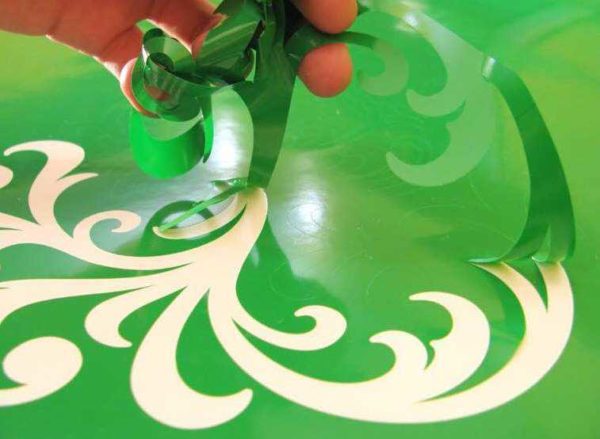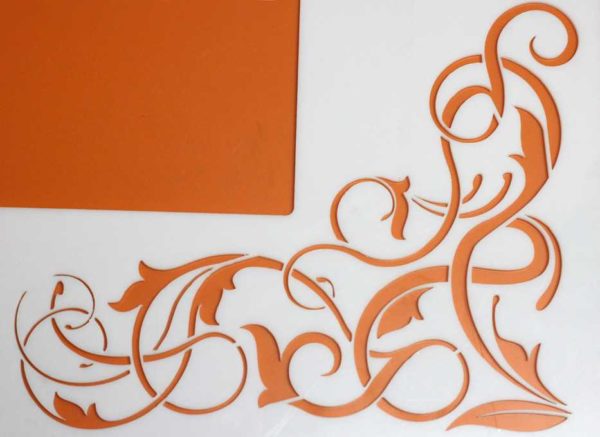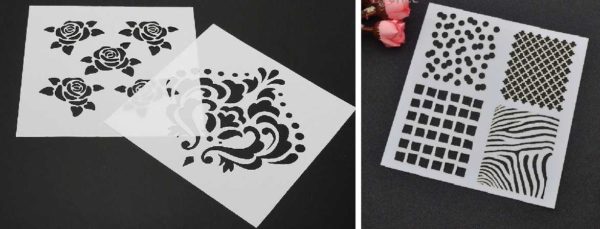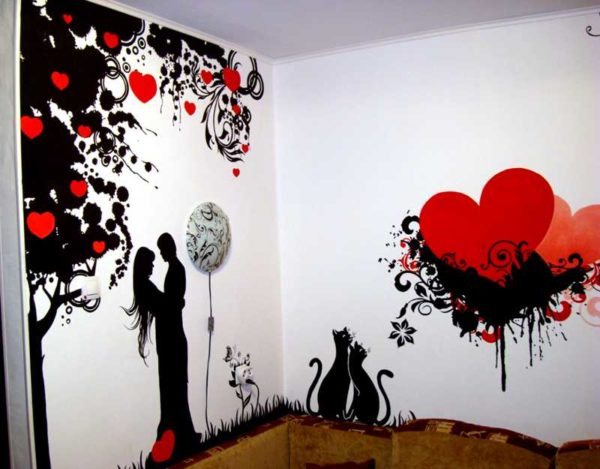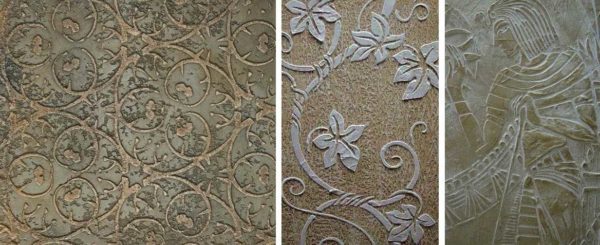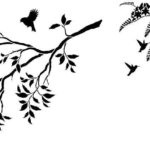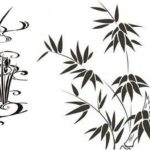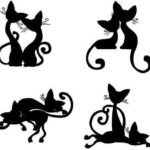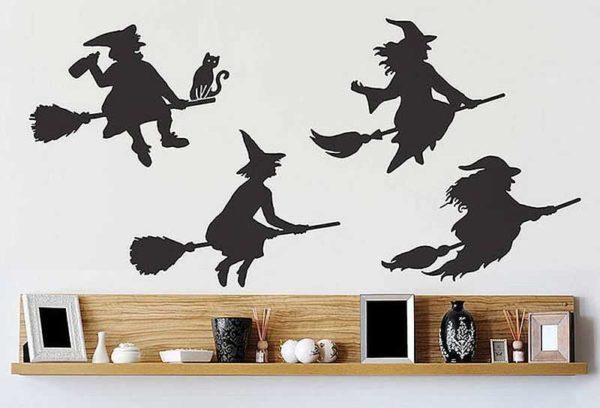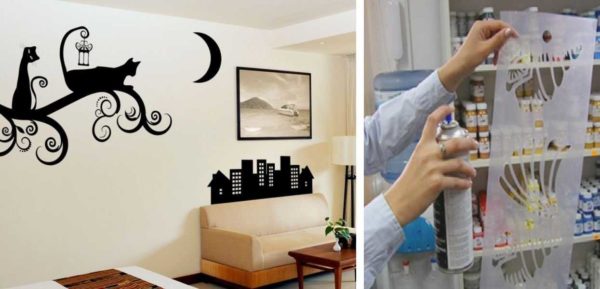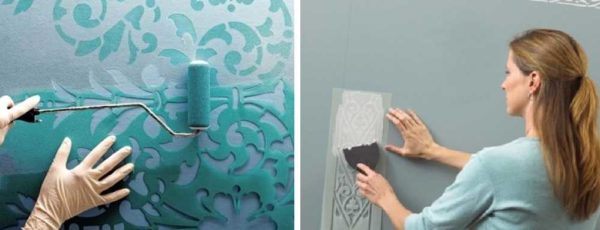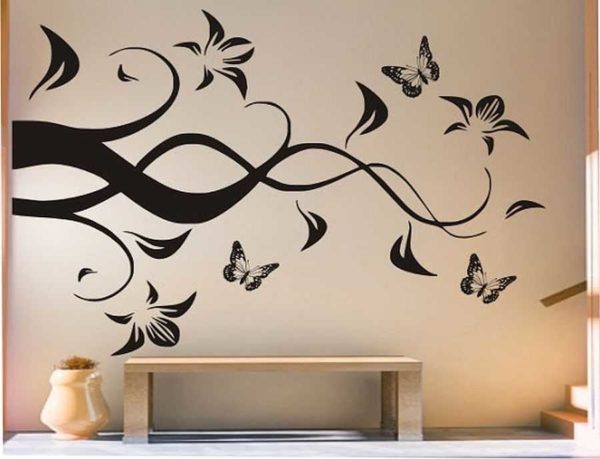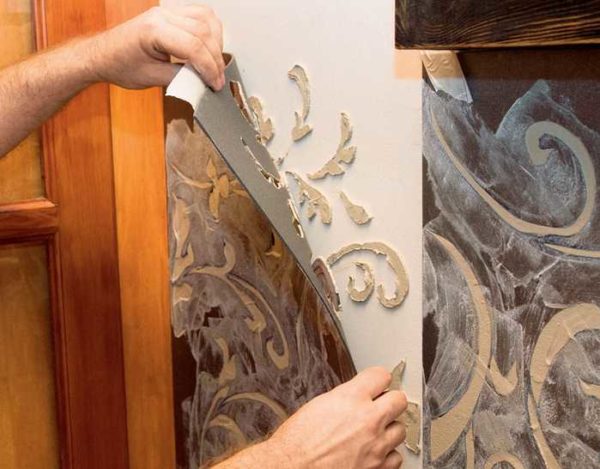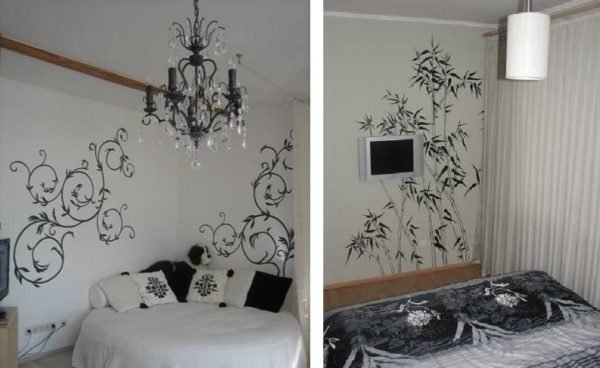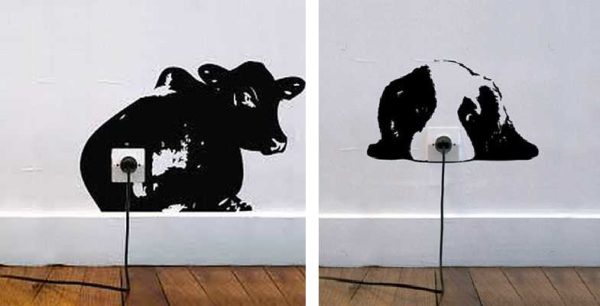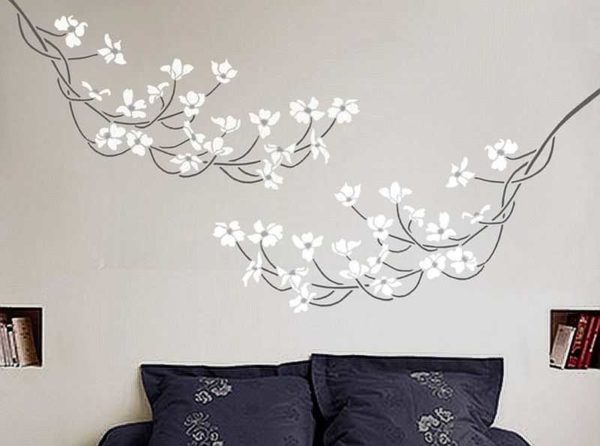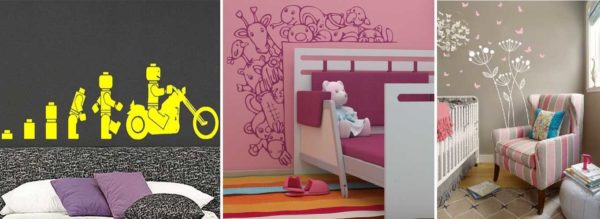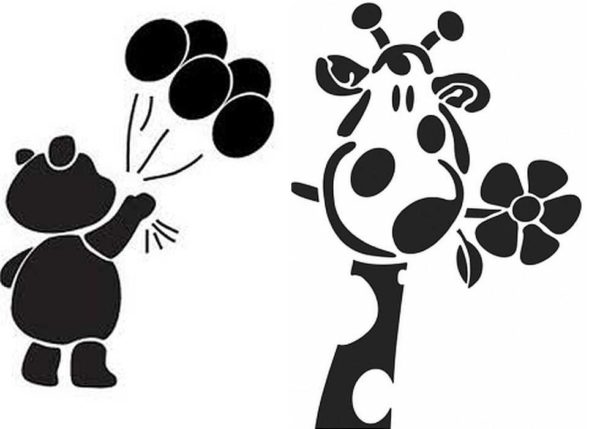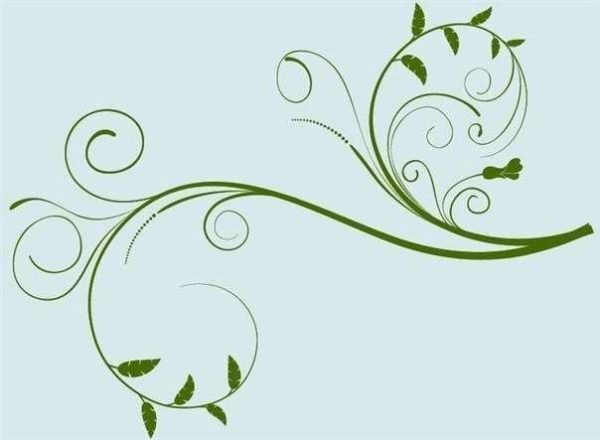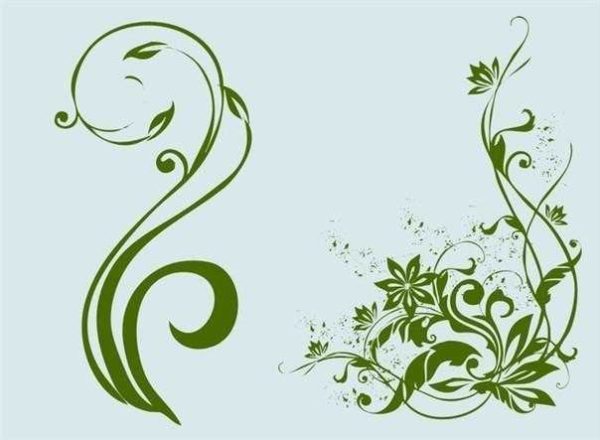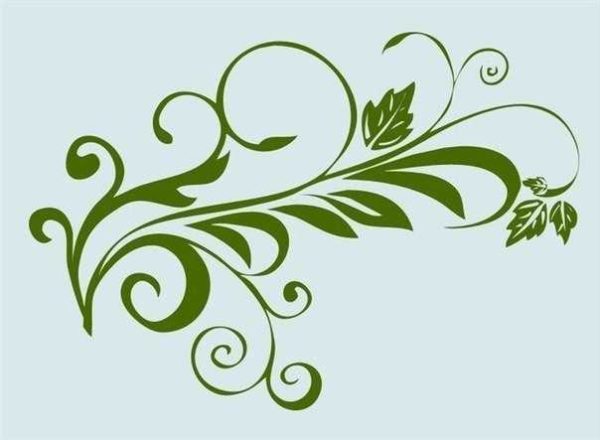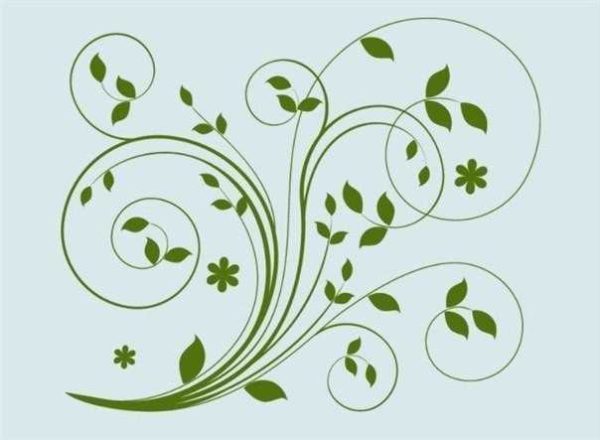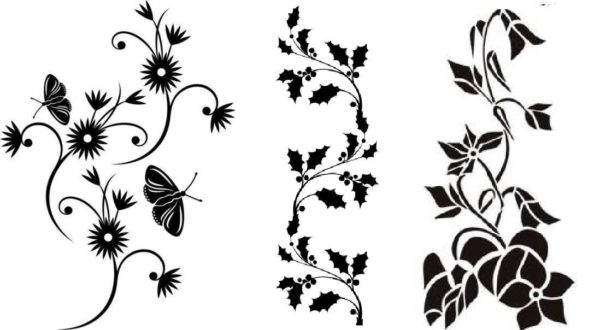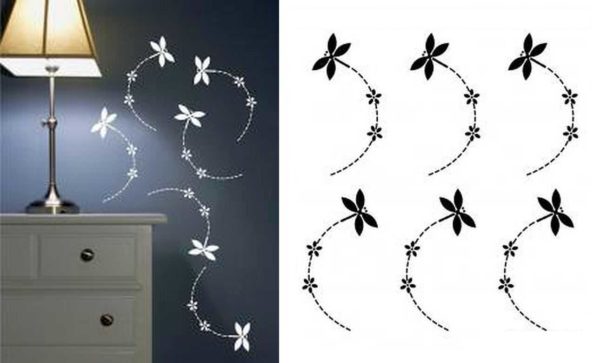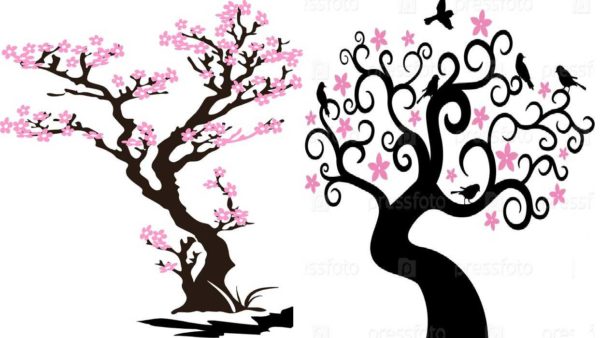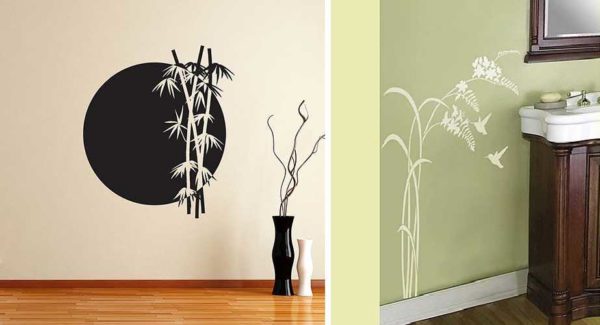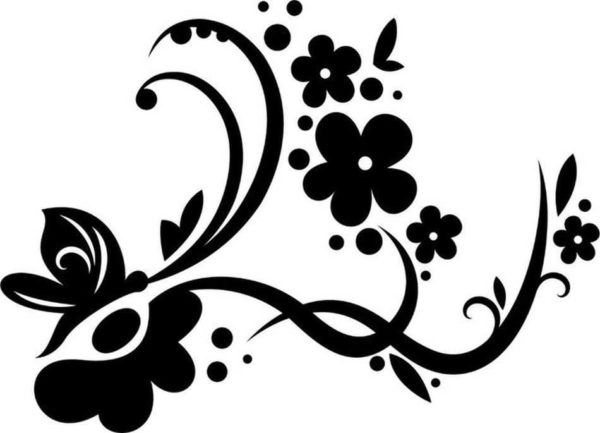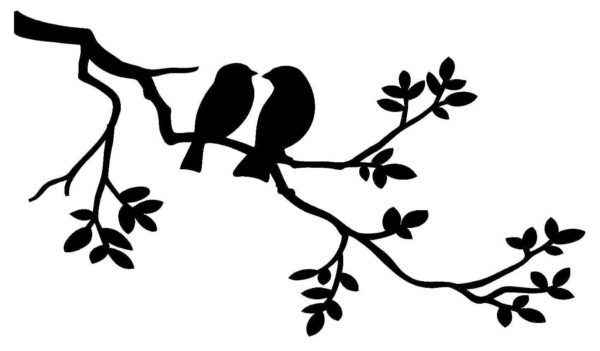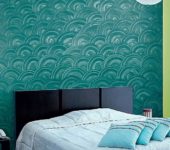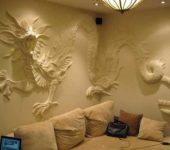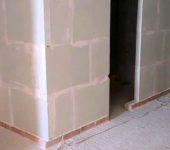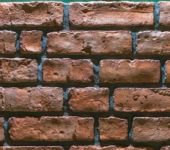Stencils for wall decor (55 photos)
Painted walls are becoming more and more popular. But sometimes you want to dilute their monotony with something. The easiest, fastest, cheapest and most effective way is to use stencils for walls to be painted. The drawing is graphic, clear and bright. Such objects can be incorporated into any setting. But the best part is that the work takes from several minutes to several hours.
The content of the article
What are they made of
Stencils for wall decor for painting are divided into reusable and disposable. Different materials are used depending on the purpose. Disposable, mostly paper. Made of thick white or colored paper. Reusable paintable wall stencils are:
- Vinyl. The film can be of different density, transparent or colored. A convenient option if you adapt - the paint spreads easily over a flat surface. Without skill, it is easy to stain a drawing or an adjacent wall. Periodically, the stencil made of PVC film must be cleaned of paint.
- PVC with a thickness of several millimeters. It is usually used for plastering drawings. The holes are filled with mass. After the composition has set (a few minutes), it is removed and cleaned.
- Cardboard. Do-it-yourself stencils for walls are made of cardboard. It is the most convenient material for self-cutting.
A few words about vinyl stencils for painting walls. They can be in the form of sheets or in rolls. If you are going to cover a large wall surface with one pattern, it is advisable to take several of the same patterns. They can be stitched together. This way the work moves faster - a large area is processed at a time.
Varieties of stencils
Stencils for walls for painting are different not only in the material from which they are made. They also differ in the type of pattern:
- Simple or single. The entire drawing is painted over with one color. If desired, you can make a gradient - from a darker shade to a lighter one. But that's all. Other colors are not available.
- Combined or multicolor. This is a whole series of templates, each of which is painted over with paint of a different color. In order for the details of the drawing to coincide, marks are applied to them. When placing the stencil on the wall, these marks are aligned.
- Reverse or anti-stencil. This template is cut in the opposite way, that is, what is cut in conventional templates remains in this and it is these parts that are attached to the wall. Then paint is applied, but it stains the areas not covered with a stencil. It turns out a halo of another paint around it, and the drawing itself remains the base color.
- For volumetric drawings. Now there are on sale decorative plasters and putties. They can also be used to paint the walls. Special stencils are made for them - thick, made of polyvinyl up to 4 mm thick. When drawing a picture, the slots are filled with putty and remain until dry. It turns out a three-dimensional drawing.
The easiest way to work with simple templates You can start with this type of drawing. If you are confident in your abilities, you can work with more complex combined ones. When working with them, remember that you can remove the film only after the paint has dried.
Where to get templates
There are ready-made templates for wall decoration on sale. They are all made from vinyl as it is flexible, durable and lightweight. If you don't like ready-made templates, there are two options:
- Order production in a company that deals with outdoor advertising or prints booklets (often this is the same company). They have special equipment - plotters, which cut the necessary outlines on vinyl. Moreover, some of them can develop a stencil for you from a photograph.
- Vegetable motifs in Japanese style are suitable for interiors in soothing colors
- Neutral stencil designs are versatile
- Beautiful birds and animals - here's another win-win
- Stencil of dancing cranes - according to legends, luckily
- Do it yourself. If you have artistic talent, it is likely that you can draw the pattern yourself. If not, download the option you like, increase it to the required size and print. Take a thick (not packaging) cardboard, put a carbon copy, on top - a drawing. Everything must be well secured so that it does not move. Outline the drawing, transfer its outlines to cardboard. Then cut with a sharp knife. To make cutting easier, place something soft (a piece of felt, for example) under the cardboard. This will make the edges smoother. In general, when making it yourself, you need to be careful - every burr or unevenness spoils the overall impression.
- Stencils for walls for painting: cats are a win-win
- Such a stencil can be made by hand: there are few details
- Simple to perform, but very colorful
- To make these more difficult - more subtle details
Self-production of stencils is a painstaking business. If this does not scare you, you can dare. You can try working with film. It requires a very thin and sharp but rigid blade. If there are even small defects - a burr, uneven edges - everything needs to be corrected. In general, good luck to you.
How to work with stencils
You can apply a picture not only on painted walls, but also on wallpaper, plastic, glass, etc. That is, stencils for walls for painting can be used not only for decorating walls, but also for decorating furniture facades, for example. Only highly embossed surfaces are not suitable. You cannot normally apply paint on them. All others are fine. Moreover, acrylic paint is compatible with almost all. They can be in a can or in an aerosol. The advantages of acrylic are known to everyone: the paint fits well both on smooth and porous surfaces, dries quickly, does not fade for a long time, and has almost no smell. That is why stencils for painting walls are usually painted over with acrylic paints.
How to work
If an anti-stencil is used, then paint is applied only from a balloon. You cannot achieve such an effect with other tools (perhaps with a spray gun). When spraying paint, the balloon is located 25-35 cm from the surface to be painted. It is better to choose the distance by conducting a "test of the pen" on a piece of old wallpaper. So you can accurately select the duration of the paint delivery, movement, and distance. And one more thing: when working with a spray can, it is necessary to additionally protect the areas adjacent to the stencil - so that the unnecessary part of the wall does not turn out to be painted from careless movement.
When working with all other templates, you can use:
- a piece of foam rubber;
- a brush with a short and thick bristle;
- roller with a sponge.
In any case, we take paint in limited quantities. If there is a lot of it, it will flow under the stencil, ruin the whole work. Therefore, dipping the brush / foam rubber / roller into the paint, we squeeze it out well. The amount of paint can be checked by swiping several times over an unnecessary sheet of paper / wallpaper.
What and how to fix
To prevent the stencils for walls for painting from moving, they must be fixed on the wall. There is a special glue for this. It is applied in a thin layer to the back of the stencil and then attached to the wall. After completing the work, it is not a problem to remove it. Moreover, it does not damage the surface.
There is another option - double-sided masking tape. Note! Masking tape is required. Not ordinary. If you use a regular one, it will damage the wall - most likely, a piece of paint will remain on the adhesive tape. Or vice versa, some of the sticky composition will be on the wall. Which is no better. But masking tape acts approximately like the glue described above: it holds well, and does not leave marks after peeling off.
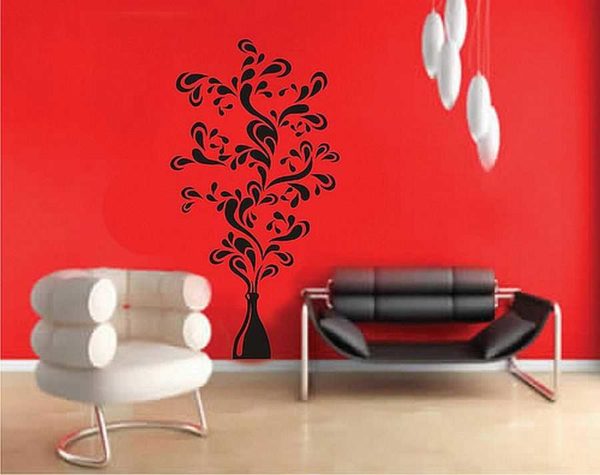
It is necessary to fasten the stencil securely, but so that when peeling off it does not damage the wall
Scotch tape is easier to buy and cheaper, so most people use it. We cut it into small pieces, remove the protective film from one side and glue it to the stencil. Pieces are needed in the corners - that's for sure, but they may also be needed in the middle of the long side of the sheet or somewhere else. It is important that the stencil holds well and that there is no way to move it.
How to transfer a picture to the wall
You need to work with a stencil for painting walls like this:
- Preparing the surface. It must be dry and clean. Ideal if the walls have recently been painted. If not, clean them thoroughly. There should be no greasy or any other stains. If you have to wash the wall, dry it well. If you need to remove dust, you can do this with a vacuum cleaner and a long-bristled brush. Then we take a slightly damp cloth and collect the leftovers. We leave to dry. Further, you can work only after the walls are dry.
- We put a stencil on the wall, mark the control points by which we will check the position of the stencil.
- Remove the protective film from the tape, align the control points, and glue.
- Take a sponge / brush / roller, dip it in paint, wring it out, paint over the details.
- Leave it for a few minutes for the paint to dry. Carefully remove the stencil from the wall, brush off the paint.
Then, if necessary, repeat the procedure. Next time you need to check whether the paint left over from the previous time has dried. Can be used only after complete drying. The paint dried several times forms a solid crust. This can cause it to flow between the stencil and the wall, or the shape of the pattern changes. Therefore, after several applications, remove the paint.
Features of working with a volumetric stencil
To form a three-dimensional image, you can use textured paint, putty, decorative plaster, liquid wallpaper and other similar compositions. Special formulations can be found in stores, but they are very expensive. In this part, the choice is yours, all of the above compositions are suitable.
All of the above materials have a pasty consistency. There is no point in applying them with a brush or roller. You need a small spatula, preferably plastic, flexible. If not, you can use a piece of any plastic. Even an old plastic card will do.
We take a certain amount of the composition on a spatula, fill the cavities with it, immediately removing the excess with the same card. At this stage, it is necessary to ensure that there are no air pockets, and the surface filled with plaster / putty is even. If you have ever worked with plaster, there will be no problem. Everything is exactly the same.
After the composition has grabbed, but even before its final drying, we remove the stencil. In this case, the edges of the pattern are torn, uneven. Don't be discouraged, this is normal. Do nothing, just wait until it dries completely. Now we take sandpaper with medium or fine grain (depending on the composition that was used) and grind all the nervousness. In general, that's all. Further, if you want, you can paint the resulting ornament, but that's another story.
Choosing a place for the stencil
A drawing on an empty or nearly empty wall looks best. Here the choice is not limited by anything. You can choose a stencil that will attract attention to yourself. This wall becomes accent.
If the wall is not too busy - there is a piece of furniture next to it, but its large surface is free, pick up a stencil that will make the furniture "play". There are drawings that play up a sofa or a mirror, turning everything into a single composition.
Tall and narrow stencils near doors and windows fit well. Usually these are floral ornaments. When choosing them, be guided by the style of room decoration. If the decor is colored, choose the colors that are found in the interior.
Small drawings that play out sockets and switches look very good. This is one of the techniques for decorating - if something cannot be hidden, let's move our attention to it. Works great in this case.
Stencil type for various premises
Stencils for walls for painting are selected depending on the type of room. There are universal patterns: geometric, floral ornaments, landscapes. They are suitable for any room, hallway, kitchen, etc. You can find a lot of them, in different versions. And under strict minimalism, and under the chic classics or romantic Provence. Moreover, the point is often not only in the drawing itself, but also in the selection of paint. The same pattern will look different in black and pink. And this is worth remembering.
There are paintable wall stencils with themed designs that are only appropriate in certain rooms. For example, in the kitchen they usually use themed pictures with food and products. In children, cartoon characters are often drawn for smaller children, for teenagers - heroes of games or anime.
For bedrooms, they try to find calmer designs. Even if it's a men's bedroom. Here you need to relax and the atmosphere should be appropriate.
In other rooms - corridors, living rooms, dining rooms - neutral images are selected that will please people of different ages. These are all the same plant motives or landscapes.
Stencils for walls for painting: photo
The number of possible patterns cannot be counted. Different styles, elements, sizes. Graphic, fantasy, from cartoons, based on paintings, photos, schematic and realistic images of flowers, insects, animals, trees ... In general, there is everything. You just need to find it. Some interesting options have been collected in this section. Perhaps you will like something.
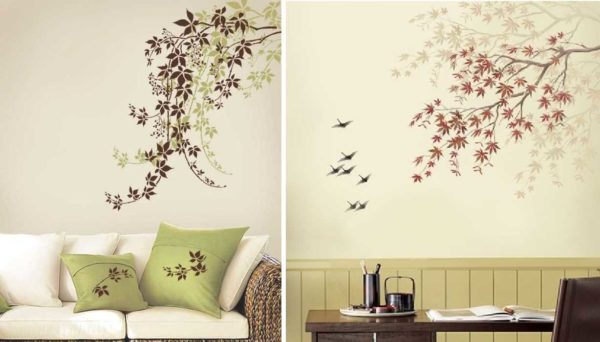
Interesting ideas: paint the stencil with the same colors that are in the interior or even apply elements to other decor items
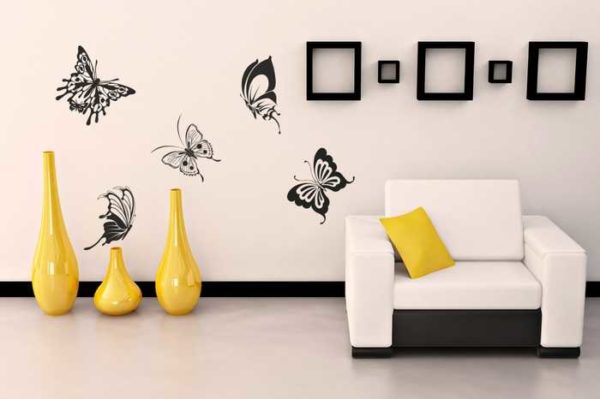
Butterflies in the interior - an eternal theme ... they are also on the stencils

